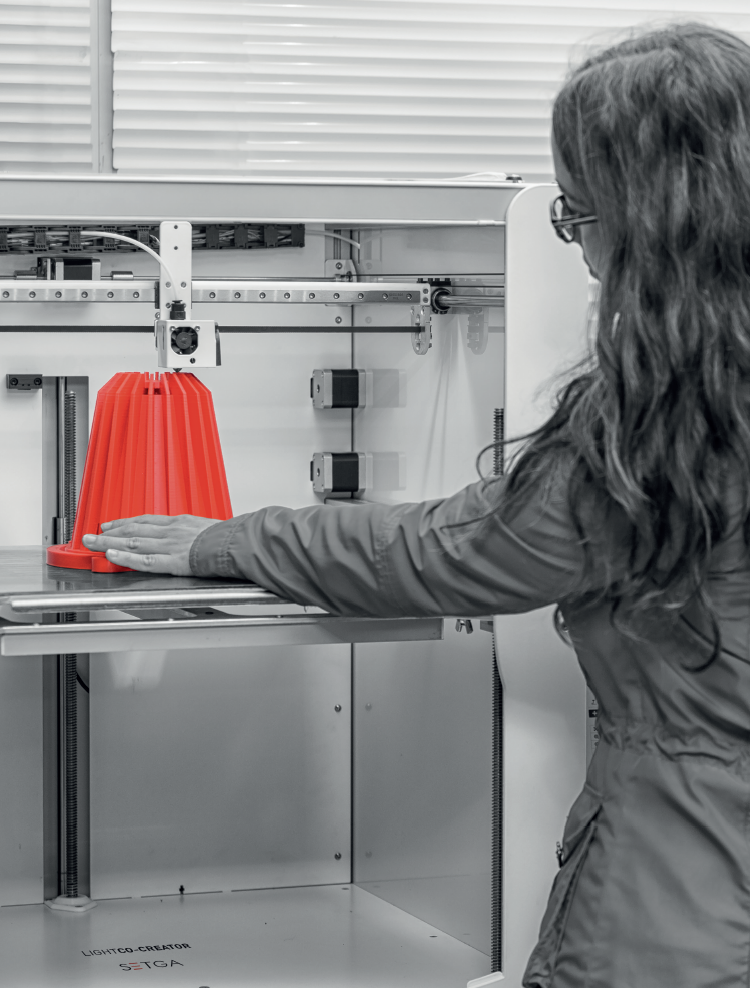A New Era in 3D Printing
Every project requires a prior research process. An initial phase in which references are taken in order to understand the background of each product, solution or discovery. In this way, being aware of the State of the Art allows us to reflect and reach conclusions that constitute a real advance, that suppose a new contribution to existing common knowledge.
SETGA is in that phase within the AMBIANCE Project. Taking references, both from companies in the sector and from other fields totally different from ours, is allowing us to advance and carry out the self-validation of our proposals.
3D printing represents for SETGA the second great technological leap in its more than 30 years of history, the first one being the incorporation of LED technology in replacing conventional light sources. 3D printing represents a paradigm shift in the approach to the current production process.
The great expectations and objectives set in this production process are three: optimisation, sustainability and user experience.
With the optimisation, we do not only estimate to be able to reduce production times but also to have control over the right amount of material that will be used, consequently reducing the cost of resources (materials and energy) and achieving less (or non-existent) generation of waste.
We consider sustainability as a great asset of 3D printing, as this production process is not directly linked to the number of units to be produced; it is ideal to combine with production on demand, therefore saving costs and minimising excess stock.
3D printing allows the use of recycled and recyclable materials, which is one of the most ecological production processes that exist today. The uncertainty is the durability characteristics that this product can offer throughout the estimated useful life of the product.
The possibility of being able to see the furniture before manufacturing it and being able to personalise it offers a great customer experience, adding value to the product and the brand. The objective is to be able to control both the aesthetic aspect and the technical elements that are incorporated into the structure of the product. 3D printing offers extensive customisation of each of the products, a very important aspect in the street furniture sector; because each city is unique and each project is different.
In addition to giving buyers a voice in order to obtain exactly what they want at the design level, we also believe that with the incorporation of this technological resource, it will be possible to achieve the objectives in terms of functionality and ergonomics, creating a product that obtains both an aesthetic and utilitarian harmony.
Each urban project is approached as a unique and characteristic intervention, where each analysis of the natural, socioeconomic and cultural environment is increasingly exhaustive.
Following our design philosophy, we have tried to move towards a product with a very respectful and harmonious line with the existing architecture, a product with a low environmental impact, great durability and low maintenance. A product that guarantees both functionality and low environmental impact.
Written by: SETGA

